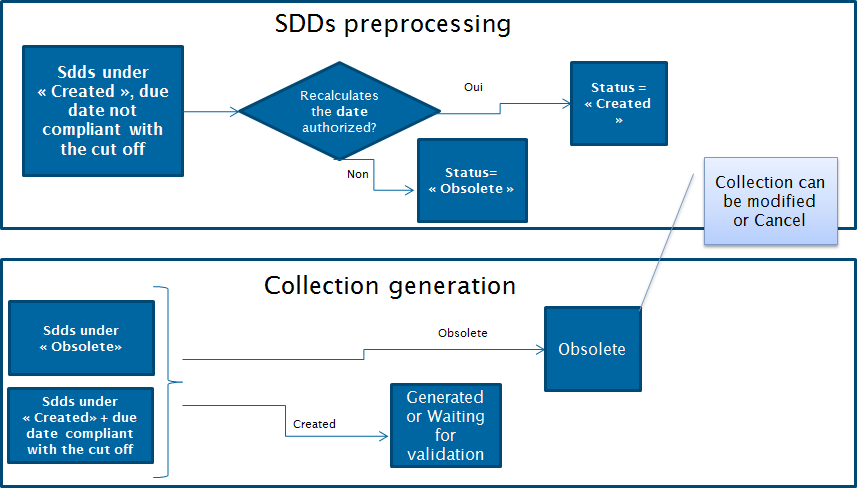Collections are generated manually by authorized users or automatically by the SEPA Payment Suite scheduler only for a child organization.
For a root organization, this generation is enabled and cannot be disabled.
Only issued transactions and those that correspond to the following criteria will be taken into account:
Their status shows as “Created”;
They have a payment date authorising their issue (in relation to the restrictions defined by the creditor’s account).

Figure 38 Collection generation process
Collections are put together taking into account the activated mandatory and optional grouping criteria. Once the SDDs are grouped in collection, SPS checks the due date.
If the due date is not valid, the collection and the included SDDs are under the status “Obsolete”.
If the due date is valid and a validation is required, the collection is “Waiting for validation” and the SDDs are in “Waiting for collection validation”
If the due date is valid and no validation is required, the collection and the included SDDs are under the status “Generated”
Collection generation even if the recalculation option is enabled.
Once this process is complete, the collections are registered in the database. They can be viewed, amended, cancelled or validated (if necessary). The modification operations are not possible for collections that are obsolete for at least 3 months.
In the case of obsolete collections, the creditor can set a new due date by updating the collection.
Collection under the status “Generated” are then taken into account during the process of generating collection files.
The transactions can no longer be amended individually. Nevertheless, they may be affected by updates to the collection in which they are included.
The GUI takes into account selected organization to display generation buttons. For instance if a sub-entity is not allowed to generate at its own level, buttons on the GUI will be displayed as follow and when the generation will be launched by the parent it will generate for this child.